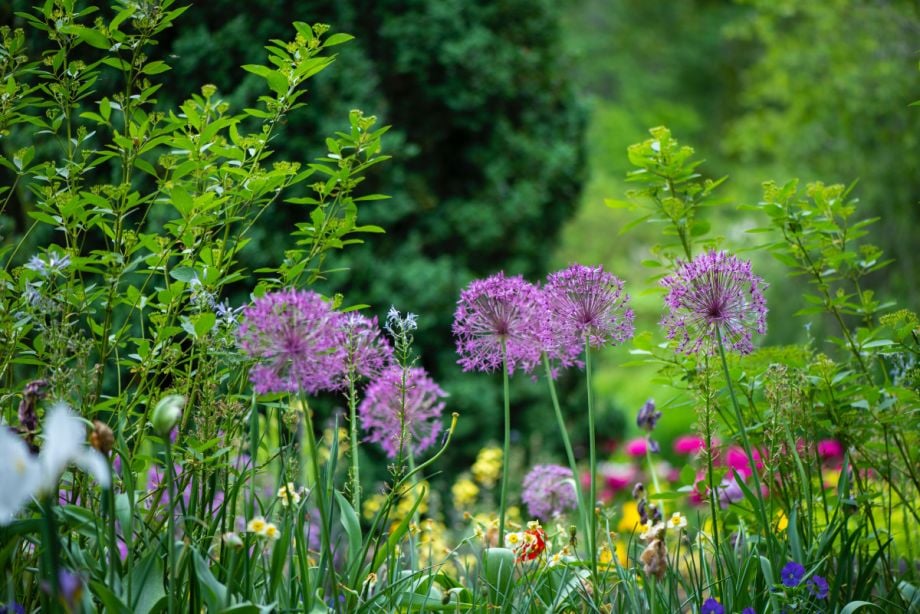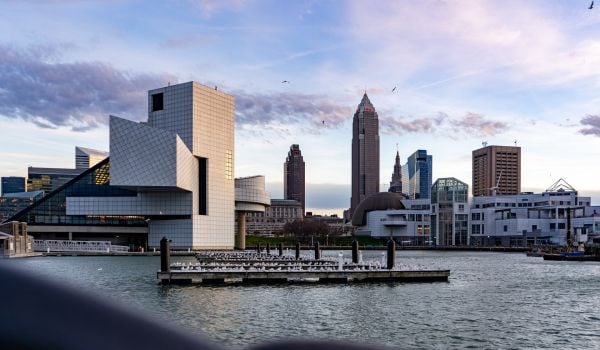The Intergovernmental Panel on Climate Change’s latest report on climate change is alarming. In addition to getting hotter, the earth is on pace to have the fastest mass extinction in its 4.5 billion year history. Yet U.S. laws and ordinances continue to make it difficult to transform our cities to be climate and biodiversity friendly.
To slow the pace of extinctions and pull carbon from the sky, we need laws that incentivize replacement of grass with native plantings. We need yard reform, and we need it yesterday.
Lawns are the largest cultivated crop in America, taking up an estimated 2% of land, over 40 million acres. They require homeowners to invest both endless amounts of time and money, all while causing indirect harm: Mowing and leaf blowing increase greenhouse gas emissions, over 70 million pounds of fertilizers contribute to algal blooms, pesticides pollute, and watering lawns strains freshwater resources.
Why then are our landscapes covered in grass? In his book “Lawn People,” political ecologist Paul Robbins examined the complex social dynamics that create our collective commitment to the lawn. Robbins’ conclusion: They’re “impossible to unimagine.”
But we are in the process of doing just that – unimagining them, as calls to replace lawns get louder daily. We know native plants are adapted to local climates and soils, thus decreasing the need to water or fertilize. We know these plants build up soil, suck up carbon, absorb rainwater to prevent flooding, and create habitat. They feed native insects which feed native birds. Planting them supports the whole local food web.
Our policies, however, have not caught up with our passion.
I planted tall grasses and native plants at my house and received a ticket from the City of Springfield threatening a fine of $150. My yard, with its tall native forbs and grasses, does violate the existing city ordinance, which defines a weed as “grass, brush, wildings, second growth, rank vegetation, and other vegetation that is not cultivated, having a greater height than 10 inches.”
Illinois is not alone. Most states and cities have similar outdated laws and ordinances that actively discourage native plantings, although local native plant enthusiasts are working hard to rewrite these.
To be sure, there are times when tall grass and shrubs can obstruct views and influence safety. They can also increase fear of unwanted ticks, mosquitos, and small mammals. However, recent evidence suggests diverse plantings actually decrease unwanted pests by increasing their natural predators.
Private homeowners associations (HOAs) can also create barriers. One Maryland family had to litigate their right to keep their native plantings. Maryland eventually passed a law to prevent HOAs from requiring lawns, but it took an inordinate effort by the homeowners. The family paid $60,000 in legal fees in the process.
Model programs exist. Some cities are reworking their ordinances, if not to reward, at least not to penalize those who convert their yards to native plantings. Chicago’s ordinance defines a weed simply as unmanaged vegetation. They have also established a native garden registry where residents register their native plantings to prevent being fined.
Some states strongly incentivize lawn removal. Nevada’s “cash for grass” rebate program pays $3 per square foot of turf grass that is removed and replaced with desert plants. After 20 years of trying only a positive incentive, Nevada recently added a negative one for non-residential zones, banning “useless” grass altogether in efforts to conserve precious water in the desert. This law will require removal of such grass by 2026, with the cash for grass program providing owners help in deferring the cost.
Minnesota is a model for the nation, as the only state that incentivizes lawn removal specifically for biodiversity conservation. Their program will reimburse up to $350 dollars to applicants who convert lawns to habitat for pollinators. In its first year this program received over 7,500 applications and funded 2,000 pollinator habitat projects.
But in a time of environmental crisis, such laws and programs need to be more widespread. State and municipal laws should be rewritten to help conserve freshwater and biodiversity. Even a model environmental municipal code — much like the Model Penal Code is an exemplar to criminal codes throughout the country — would send local and state lawmakers the message that they need to make replacing our lawns not just acceptable but advisable.
The Sabin Center for Climate Change Law at Columbia Law School is working on this, but so far the center has only drafted model language for codes about green buildings, solar siting and wind siting. Plants aren’t addressed — at least not yet — in their work. To date, it seems as if native plant societies have been trying to single-handedly rework ordinances.
Professor Michael Rosenzweig, emeritus professor of ecology and evolutionary biology at Arizona State, has championed the idea of reconciliation ecology, which seeks to enhance biodiversity conservation in human dominated landscapes.
Reconciliation ecology asks us to create habitat for species in untraditional spaces: cities, businesses, college campuses, roadsides and median strips — and our homes. The most obvious candidates for this type of reconciliation are our front yards. It’s time for cities to respond to our climate crisis by not just allowing, but incentivizing, lawn removal.
Amy McEuen, Ph.D. is a Public Voices Fellow with The OpEd Project and an associate professor of biology at University of Illinois Springfield.
















